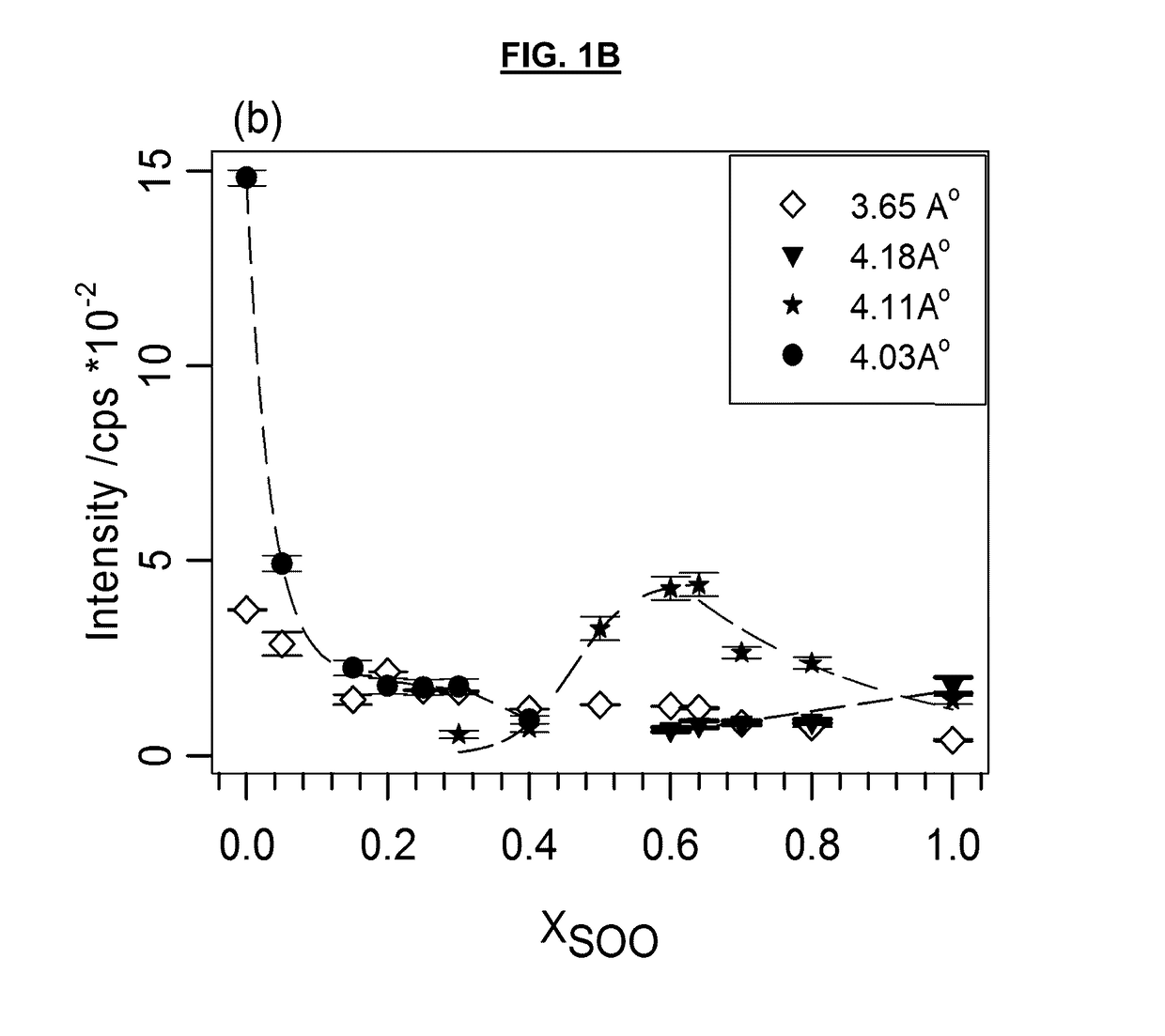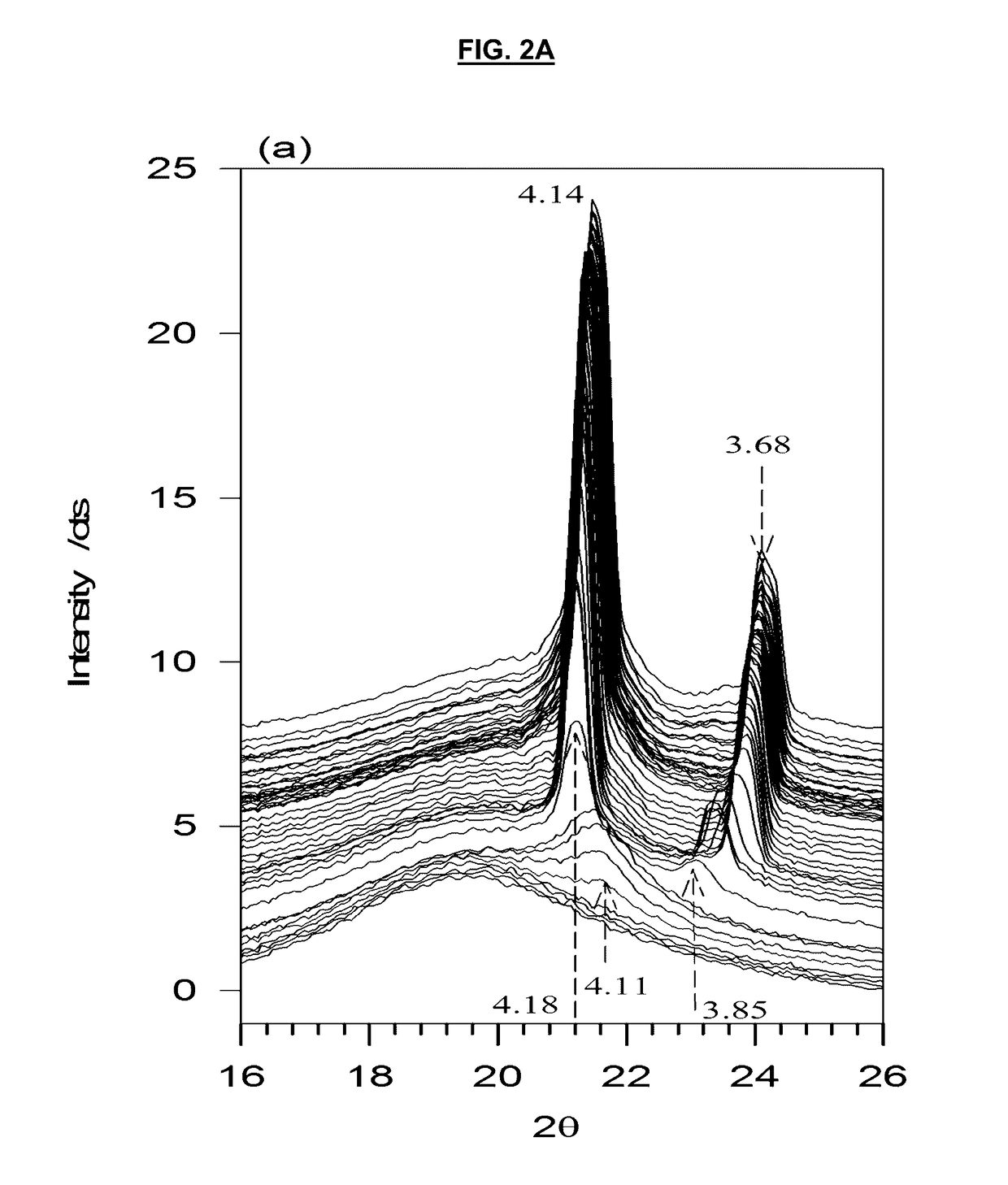Certain triacylglycerols as crystallization depressants
a technology of triacylglycerol and crystallization depressant, which is applied in the field of polymorphism and microstructure of certain triacylglycerols and fatty acid methyl esters, can solve the problems of poor cold flow properties, adversely affecting the operability of vehicles using these fuels, and reducing the ability of fuel to flow, so as to reduce the crystallization temperature of a biodiesel fuel
- Summary
- Abstract
- Description
- Claims
- Application Information
AI Technical Summary
Benefits of technology
Problems solved by technology
Method used
Image
Examples
example 1
Materials and Methods of Preparation of SOO and / or MeS
[0051]Materials
[0052]1,2-dioleoyl-3-stearoyl glycerol (SOO) was synthesized and purified and Methyl Stearate (MeS) was purchased (Sigma Aldrich Chemical Co. Inc., Oakville, Ontario). Their purities were greater than 99% as determined by high performance liquid chromatography (HPLC). The purity of MeS was confirmed by GC-FID. The sample was run as is in chloroform, using a Zebron Capillary GC (ZB-5HT Inferno) column (Phenomenex, Torrance Calif., USA). SOO purity was determined by a Waters HPLC system (Alliance e2695 Milford, Mass.) fitted with a Waters ELSD 2424 evaporative light scattering detector. The SOO and MeS were mixed in the desired molar fractions at 0.05 molar fraction increments (XSOO=0, 0.05, 0.10, 0.20, 0.30, 0.40, 0.50, 0.60, 0.70, 0.80, 0.90 and 1.00), then heated to 80° C. and stirred for 5 min to ensure complete homogeneity. The samples were stored at 4° C.
[0053]Differential Scanning Calorimetry
[0054]The thermal ...
example 2
Crystal Structure of SOO / MeS Mixtures
[0066]Wide Angle X-Ray Diffraction and Subcell Structure
[0067]The WAXD patterns of the SOO / MeS mixtures measured at −40° C. after cooling from the melt at 1° C. / min are shown in FIG. 1A. The intensity of selected reflections in the WAXD region are presented in FIG. 1B. As can be seen, a background halo indicative of the presence of a liquid or amorphous phase was still present in the patterns even at −40° C., particularly in the SOO-rich mixtures. This contribution was systematically subtracted before the analysis of the patterns and determination of the crystal phases.
[0068]The XRD pattern of MeS perfectly matched the diffraction powder file of its monoclinic structure (labeled βM) published by the International Center for Diffraction Data (ICDD) and assigned to a monoclinic crystal structure (PDF, reference No 00-032-1764). The peaks at 4.25 Å, 4.03 Å and 3.63 Å of pure MeS are assigned to the (611), (1011) and (121) planes, respectively.
[0069]...
example 3
Crystallization and Melting Behaviors
[0080]Crystallization Behaviors
[0081]The DSC cooling thermograms of the SOO / MeS mixtures are displayed in FIG. 5A. The cooling phase diagram of the binary system including Ton, TP and Toff of crystallization is presented in FIG. 5B. MeS presented a single sharp and intense exotherm at ˜33.3° C. (Po in FIG. 5A) with a loop due to the exothermic energy not being dissipated by the DSC in sufficient time for the signal to be temporally resolved. Such a signal was typical of the rapid growth of a very energetic single phase. SOO presented an extended and relatively weak leading peak at ˜7° C. followed by a large exotherm at ˜−7° C. (P1 and P3 in FIG. 5A, respectively) indicating a complex crystallization process. This transformation path was similar to what was previously reported for SOO wherein, the nucleation and slow growth of the low stability β2-phase of OPO was followed by a rapid polymorphic transformation into the β1-phase as well as the nucl...
PUM
| Property | Measurement | Unit |
|---|---|---|
| temperatures | aaaaa | aaaaa |
| temperatures | aaaaa | aaaaa |
| temperatures | aaaaa | aaaaa |
Abstract
Description
Claims
Application Information
 Login to View More
Login to View More - R&D
- Intellectual Property
- Life Sciences
- Materials
- Tech Scout
- Unparalleled Data Quality
- Higher Quality Content
- 60% Fewer Hallucinations
Browse by: Latest US Patents, China's latest patents, Technical Efficacy Thesaurus, Application Domain, Technology Topic, Popular Technical Reports.
© 2025 PatSnap. All rights reserved.Legal|Privacy policy|Modern Slavery Act Transparency Statement|Sitemap|About US| Contact US: help@patsnap.com



